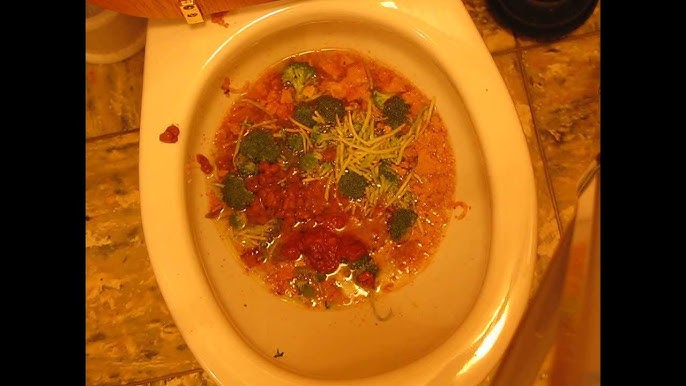Are You Able to Dispose of Food Waste in the Toilet?
Are You Able to Dispose of Food Waste in the Toilet?
Blog Article
What're your opinions on What Can Happen If You Flush Food Down the Toilet??

Intro
Many people are commonly confronted with the issue of what to do with food waste, particularly when it comes to leftovers or scraps. One typical concern that emerges is whether it's okay to flush food down the toilet. In this short article, we'll explore the reasons why people could consider flushing food, the repercussions of doing so, and different methods for correct disposal.
Reasons that people could consider purging food
Absence of awareness
Some individuals might not recognize the possible harm brought on by flushing food down the bathroom. They may wrongly believe that it's a safe practice.
Convenience
Flushing food down the toilet might feel like a fast and easy option to throwing away unwanted scraps, particularly when there's no neighboring trash bin offered.
Negligence
Sometimes, people might simply select to flush food out of large laziness, without considering the effects of their actions.
Consequences of flushing food down the bathroom
Environmental impact
Food waste that ends up in waterways can contribute to contamination and harm aquatic ecosystems. In addition, the water used to purge food can strain water resources.
Plumbing problems
Flushing food can bring about clogged up pipes and drains pipes, triggering pricey pipes repairs and aggravations.
Types of food that must not be purged
Fibrous foods
Foods with fibrous appearances such as celery or corn husks can obtain tangled in pipes and cause obstructions.
Starchy foods
Starchy foods like pasta and rice can absorb water and swell, causing blockages in pipelines.
Oils and fats
Greasy foods like bacon or food preparation oils should never be flushed down the bathroom as they can strengthen and cause clogs.
Correct disposal approaches for food waste
Utilizing a waste disposal unit
For homes furnished with waste disposal unit, food scraps can be ground up and purged with the pipes system. Nonetheless, not all foods appropriate for disposal in this way.
Recycling
Particular food packaging materials can be recycled, decreasing waste and decreasing environmental impact.
Composting
Composting is a green way to deal with food waste. Organic materials can be composted and used to improve soil for gardening.
The significance of proper waste monitoring
Lowering environmental harm
Proper waste management practices, such as composting and recycling, aid decrease air pollution and protect natural deposits for future generations.
Securing pipes systems
By avoiding the technique of flushing food down the toilet, home owners can avoid costly plumbing repair services and keep the honesty of their pipes systems.
Verdict
Finally, while it might be alluring to flush food down the bathroom for benefit, it's important to understand the possible consequences of this activity. By adopting correct waste administration methods and dealing with food waste responsibly, individuals can contribute to much healthier pipes systems and a cleaner setting for all.
FLUSH FOOD DOWN THE TOILET?
FLUSHING FOOD CAN CAUSE BLOCKED DRAINS IN YOUR HOME
All of the plumbing fixtures in your home are connected to the same sewer pipe outside of your home. This outdoor sewer pipe is responsible for transporting all the wastewater from your home to the Council sewer mains. Even small pieces of food that go down the kitchen sink can cause problems for your sewer. It should therefore be obvious that flushing larger bits of food, such as meat, risks a clog in either the toilet itself or the sewer pipes. Flushing greasy food is even more problematic because oil coagulates when it cools, coating the interior lining of your pipes.
THE TOILET IS NOT A BIN
Food isn’t the only thing that people shouldn’t be flushing down the toilet. People use the toilet to dispose of all kinds of things such as tampons, makeup wipes, dental floss, kitty litter and even underwear. Water goes to great lengths to educate residents about the high costs and stress placed on wastewater treatment systems simply from people flushing the wrong stuff down the toilet. It costs taxpayers millions of dollars each year, and homeowners thousands in blocked drain repairs.
FLUSHING FOOD IS A WASTE OF WATER
Flushing food is a waste of our most precious resource - water. In June this year Level 1 water restrictions were introduced to protect water supply from drought conditions. Much of New South Wales continues to be affected by prolonged drought with recent figures revealing up to 97 per cent of the state remains in drought. Depending on whether you have a single or dual flush toilet, every single flush uses between five and 11 litres of water. In the current climate this is a huge amount of water to be wasting on flushing food that should be placed in the bin (or better yet, the compost).
https://www.jabplumbingsolutions.com.au/blog/can-you-flush-food-down-the-toilet

Do you really like reading up on Is it safe to flush food (especially rice) down the toilet?? Try to leave feedback down the page. We'd be delighted to find out your views about this blog posting. In hopes that you come back again in the near future. Remember to take the time to distribute this page if you enjoyed reading it. Thanks for your time spent reading it.
Call Today Report this page